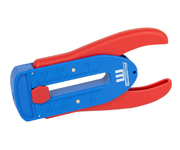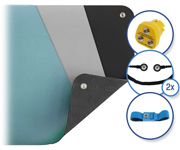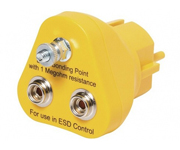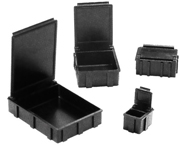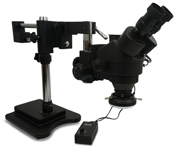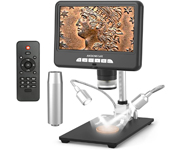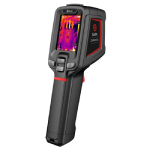Thermal cameras are great for inspection of electronics or finding gaps in building insulation. Even water leaks can be found with a thermal camera.
Thermal cameras are great for these goals, because differences in temperature in one region can be spotted easily. Thermal cameras are less suitable for measuring absolute temperatures. If you want to measure the exact temperature of an electronic component, you better use a thermometer with a thermocouple. Want to know which components are the hotspots? Use a thermal camera.
In this article the different errors in temperature measurement with a thermal camera are discussed.
Gradient error and vignetting
When you make a thermal photo of a surface which has one even temperature you will notice that the camera still registers temperature differences. One side or one corner can register higher temperatures, but the error could also have the shape of lens vignetting. This error is caused by lens inaccuracies and lens misalignment. Errors between 1 and 2.5K are considered to be normal.
The image below shows the thermal image taken with a FLIR C5 of an even surface. As you can see a difference of 1.5°C can be observed. When the camera is rotated upside down, the location of the hot and cold spots don't move, so this error is in the camera.

The image below shows the vignetting error of the Guide PC210 camera. The image on the right shows an actual measurement in the auto range mode and you notice that the vignetting doesn't affect the result. Hot spots are still easy to find.

The image below shows an example of a gradient error of 1.7°C of a different thermal camera.








